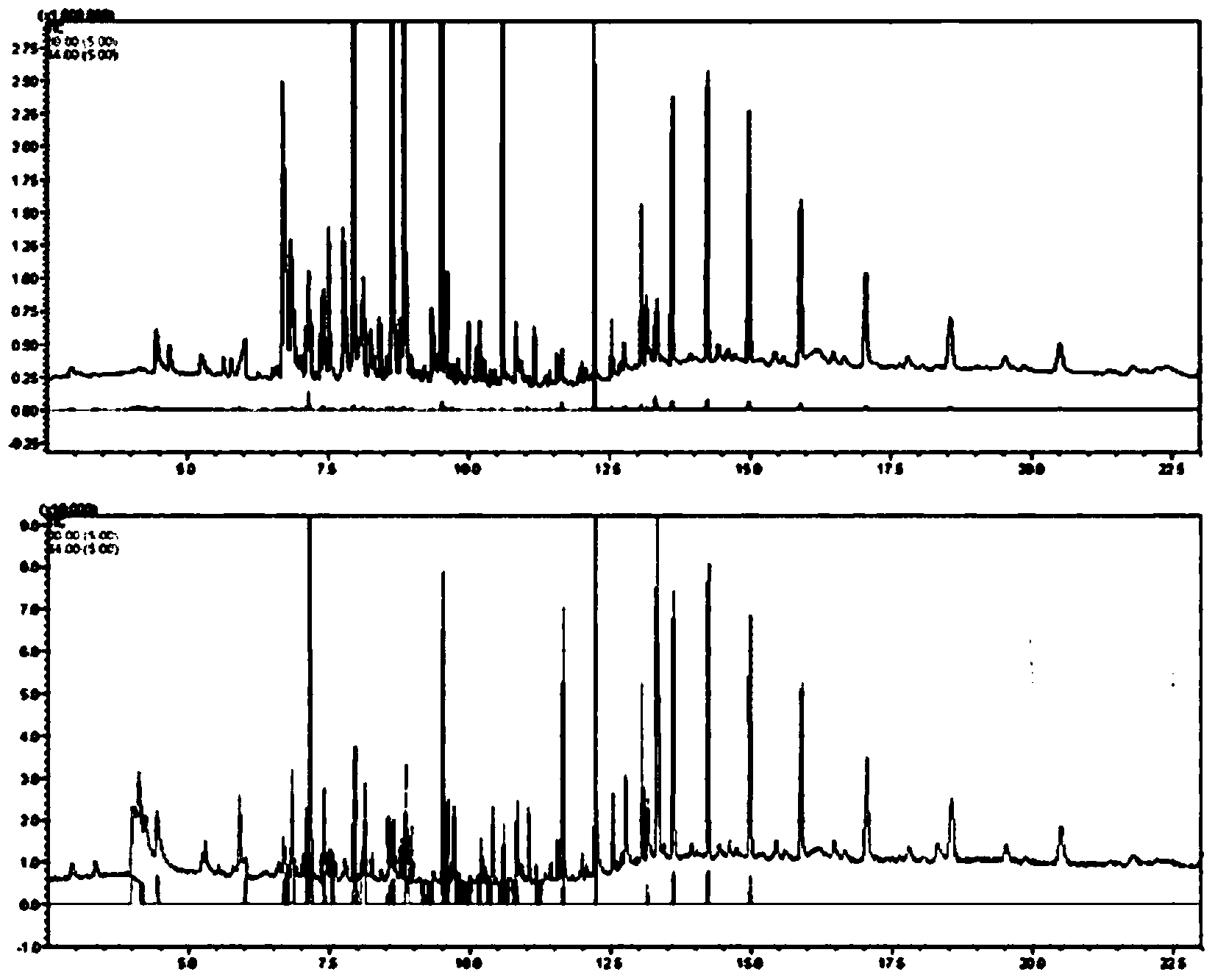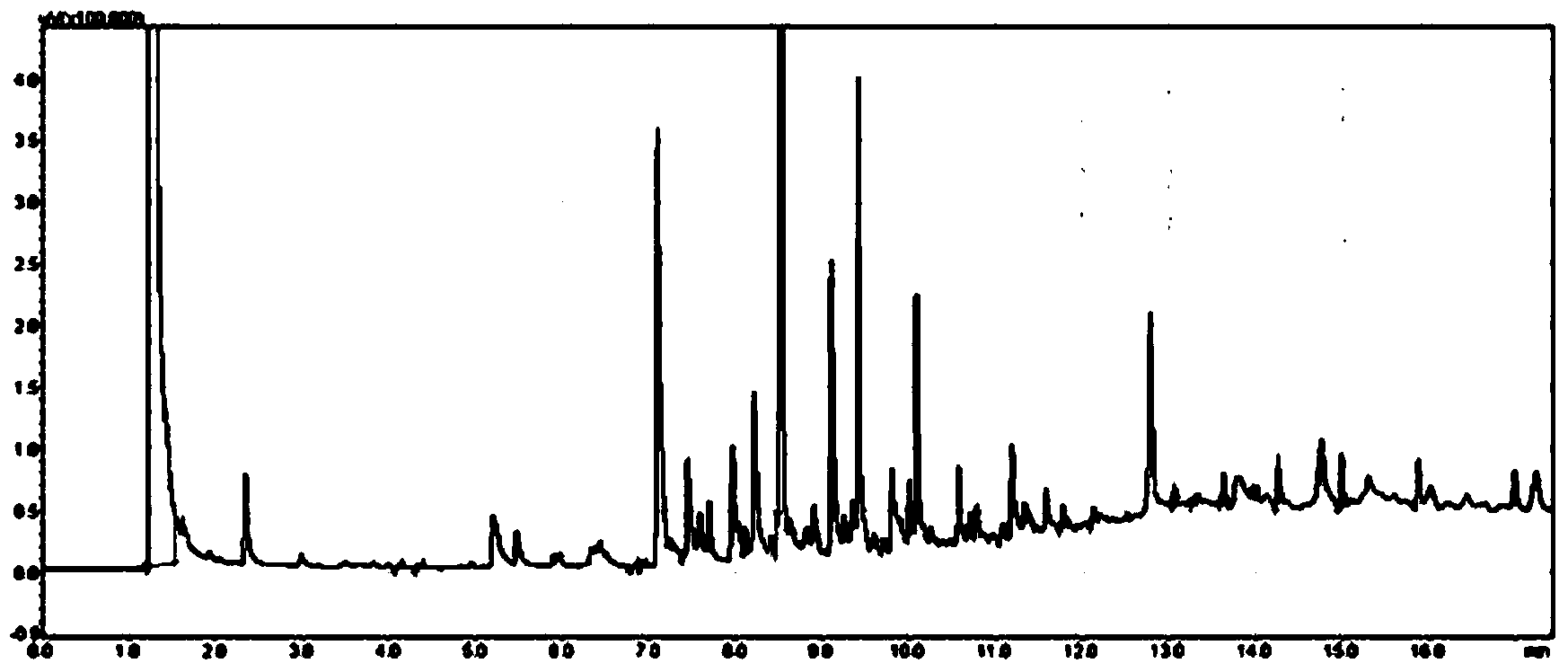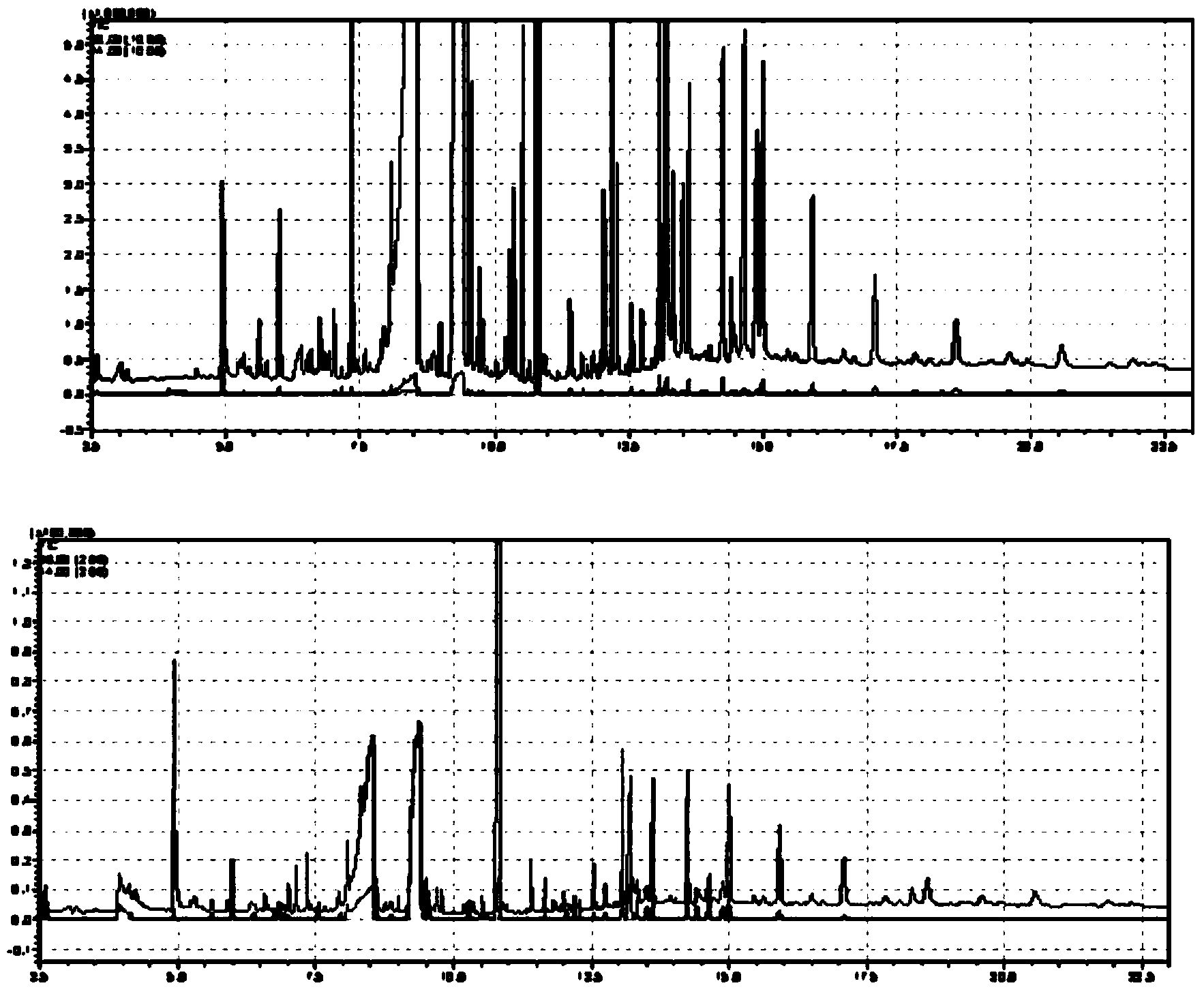Total-detection method of volatile N-nitrosamine compounds in foods
A technology of nitrosamines and detection methods, which is applied in the direction of measuring devices, instruments, and material analysis through electromagnetic means, can solve the problem of not making full use of different ion sources of nitrosamine compounds, not being able to represent the toxicity of nitrosamine compounds, and not being able to Distinguishing nitrosamine compounds and other issues to achieve good promotion and use value, facilitate real-time tracking, and save testing costs
- Summary
- Abstract
- Description
- Claims
- Application Information
AI Technical Summary
Problems solved by technology
Method used
Image
Examples
Embodiment 1
[0051]Sample distillation and extraction: Weigh 50 g of crushed commercially available bacon products, use a simultaneous extraction and distillation device to carry out two steps of distillation and extraction at the same time, put the weighed sample in a sample bottle, add ultrapure water 100mL and internal standard two Connect 40ml of methyl chloride to the simultaneous extraction and distillation device, start heating for distillation and ultrasonic extraction, and collect condensate. The distillation temperature is controlled at 110°C, and the collection temperature is controlled at 45°C. When the distillate begins to drip from the phase separation tube Distillation ends after 40-60 minutes;
[0052] Concentration and constant volume: Concentrate the extract in the collection bottle to a volume of <1.0mL, dry it with anhydrous sodium sulfate, transfer the concentrated solution into a 2.0mL brown sampling bottle, wash the collection bottle with methanol, and mix the washing...
Embodiment 2
[0063] Adopt the same method as Example 1, the difference is: the food to be tested is traditional kimchi.
[0064] After calculation, the total content of nitrosamine compounds in the traditional kimchi used in this example is 4.84ng / g, as shown in Table 2.
[0065] Table 2 The content and total amount of each nitrosamine compound in pickles in Example 2 of the present invention
[0066]
[0067] The analytical result figure of embodiment 2 traditional kimchi is as follows image 3 shown, from image 3 It can be seen that there are 100-105 kinds of volatile organic components detected in traditional kimchi in Example 2, but it can be seen from the enlarged picture of the probe signal that only 27 kinds contain probe signals 30 and 44. The gas chromatograms of the 27 nitroso compounds corresponding to the mass spectra are as follows Figure 4 shown.
Embodiment 3
[0069] Adopt the same method as Example 1, the difference is: the food to be tested is edible betel nut.
[0070] After calculation, the total content of nitrosamine compounds in the edible betel nut used in this example is 115.3 ng / g, as shown in Table 3.
[0071] Table 3 The content and total amount of each nitrosamine compound in the embodiment of the present invention 3 betel nuts
[0072]
[0073] Example 3 The analytical result figure of edible betel nut Figure 5 shown, from Figure 5 It can be seen that there are 70-75 kinds of volatile organic components detected in the edible betel nut in Example 3, but from the enlarged picture of the probe signal, it can be seen that there are only 14 kinds of volatile organic components containing probe signals 30 and 44. The gas chromatograms of the 14 nitroso compounds corresponding to the mass spectra are as follows Image 6 shown.
[0074] It is worth noting that the present invention has analyzed 4 parts of bacon produ...
PUM
 Login to View More
Login to View More Abstract
Description
Claims
Application Information
 Login to View More
Login to View More - R&D
- Intellectual Property
- Life Sciences
- Materials
- Tech Scout
- Unparalleled Data Quality
- Higher Quality Content
- 60% Fewer Hallucinations
Browse by: Latest US Patents, China's latest patents, Technical Efficacy Thesaurus, Application Domain, Technology Topic, Popular Technical Reports.
© 2025 PatSnap. All rights reserved.Legal|Privacy policy|Modern Slavery Act Transparency Statement|Sitemap|About US| Contact US: help@patsnap.com



